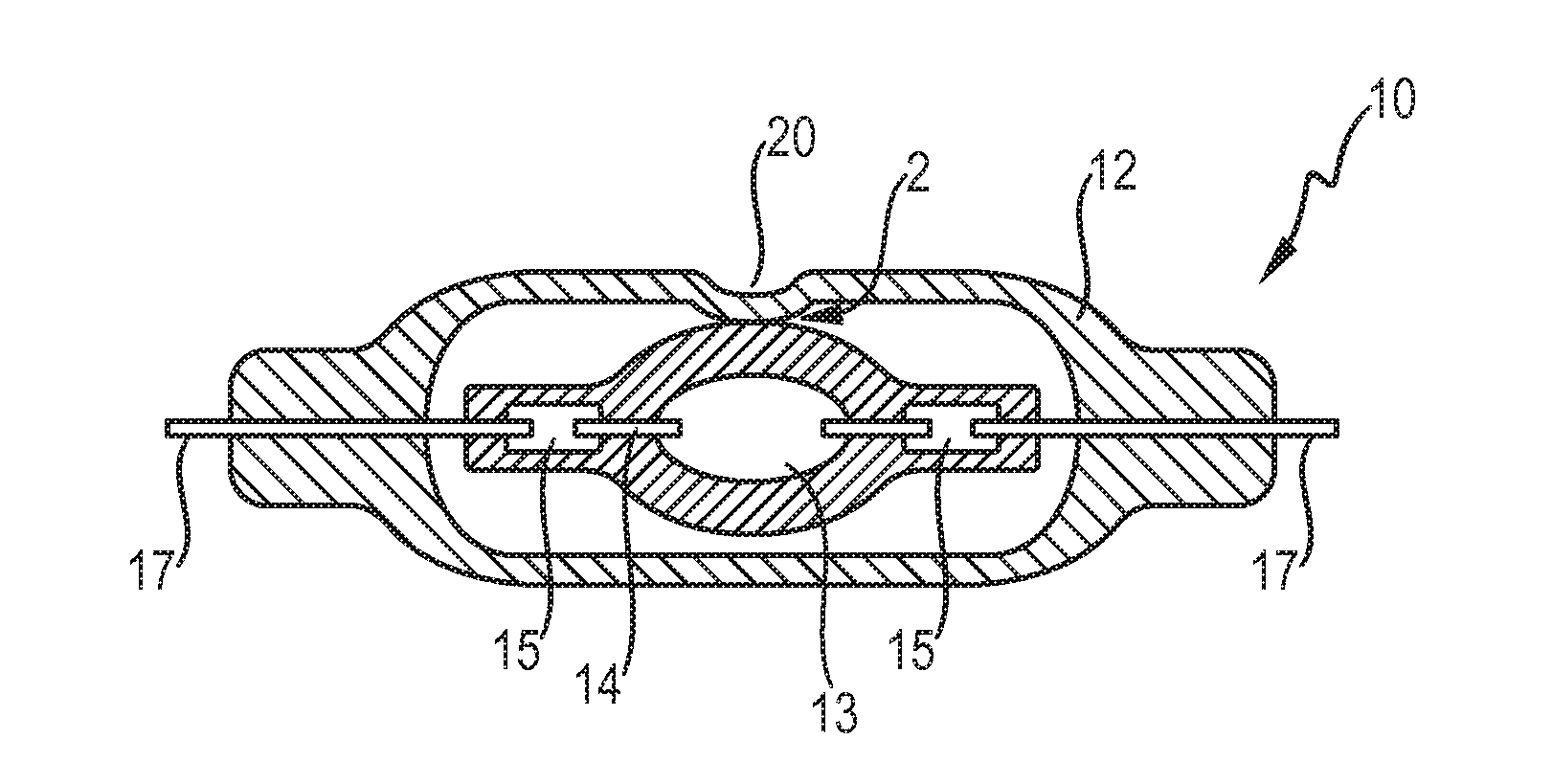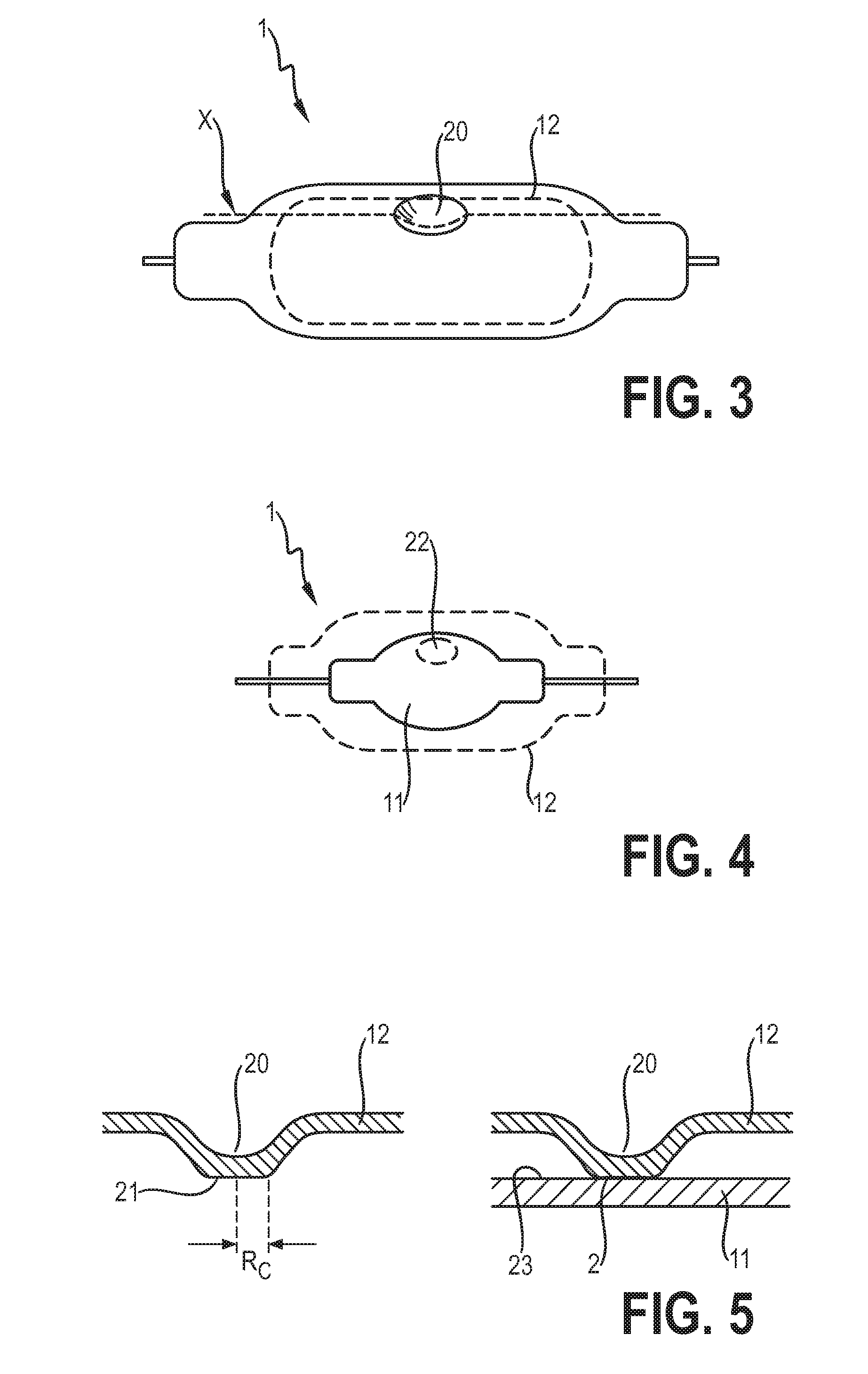Gas-discharge lamp
a gas-discharge lamp and lamp body technology, applied in the field of gas-discharge lamps, can solve the problems of shortened lamp lifetime, drop in integral light flux, and excessively high wall temperature, and achieve the effect of improving lumen maintenance and lamp life, reducing the number of lamps, and increasing heat transfer efficiency over this area conta
- Summary
- Abstract
- Description
- Claims
- Application Information
AI Technical Summary
Benefits of technology
Problems solved by technology
Method used
Image
Examples
Embodiment Construction
[0037]FIG. 1 shows a prior art gas-discharge lamp 10 with a discharge vessel 11 arranged in an outer envelope 12. A pair of electrodes 14 protrudes into the discharge vessel 11. To mitigate thermo-mechanical stress owing to the high temperatures obtained during operation, an electrode 14 is usually connected to an exterior lead 17 by a flat molybdenum foil 15 enclosed in a pinch end of the discharge vessel 11. During operation, a discharge arc 16 is established between the electrode tips. Due to convection and the plasma nature of the discharge arc, the temperature in the upper region of the discharge vessel 11 is higher than in the lower region of the discharge vessel 11. For the reasons mentioned in the introduction, a high wall temperature in the lower vessel region is desired, since this ensures that sufficient metal salts are available in the plasma so that a high light output can be achieved. Because the wall temperature in the upper region is always higher than in the lower r...
PUM
 Login to View More
Login to View More Abstract
Description
Claims
Application Information
 Login to View More
Login to View More - R&D
- Intellectual Property
- Life Sciences
- Materials
- Tech Scout
- Unparalleled Data Quality
- Higher Quality Content
- 60% Fewer Hallucinations
Browse by: Latest US Patents, China's latest patents, Technical Efficacy Thesaurus, Application Domain, Technology Topic, Popular Technical Reports.
© 2025 PatSnap. All rights reserved.Legal|Privacy policy|Modern Slavery Act Transparency Statement|Sitemap|About US| Contact US: help@patsnap.com



